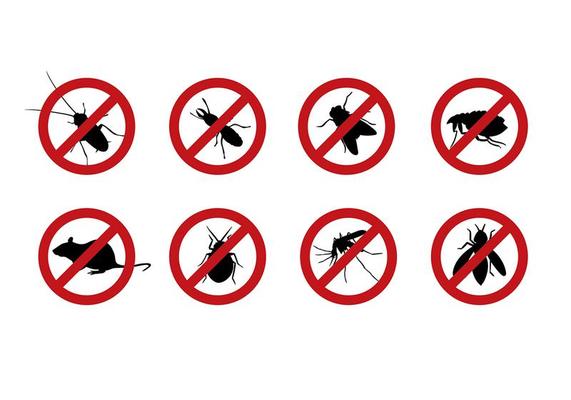Bed Insect Treatment Failure: Comparing Chemical Vs. Non-Chemical Solutions
In the world of insect control, specifically when handling the persistent problem of bed bugs, the option in between chemical and non-chemical therapy solutions can be a crucial one. Both techniques supply distinct advantages and downsides, influencing aspects such as performance, safety considerations, and total cost. By checking out the nuanced information of each method, a clearer understanding of which course to seek in resolving a bed pest infestation can be attained.
Efficiency of Chemical Therapies
Chemical therapies for bed pest problems have been extensively recognized for their fast and potent efficiency in eliminating these insects. When taking into consideration the effectiveness of chemical treatments, it is important to recognize that they can give a quick and thorough option to a bed insect issue. Specialist pest control operators frequently rely on insecticides to target bed bugs at different stages of their life cycle, consisting of fairies, eggs, and adults. These chemicals usually function by interrupting the bed insects' nervous system, leading to paralysis and ultimate fatality.
In addition, chemical treatments have the benefit of using recurring impacts, implying that they can proceed to get rid of bed bugs even after the first application. This residual activity is particularly beneficial in combating any kind of prospective re-infestations. Additionally, the fast activity of chemical therapies can bring relief to people facing serious bed pest invasions, permitting them to gain back control of their living spaces swiftly.
Safety And Security Worry About Chemical Solutions
One important facet that requires careful consideration when making use of chemical options for bed pest therapy is guaranteeing the security of residents and the environment. While chemical therapies can be reliable in eliminating bed insects, they might present dangers otherwise dealt with appropriately. One of the main security concerns with chemical options is the prospective damage they can trigger to human health and wellness. Direct exposure to certain chemicals used in bed bug therapies can cause respiratory system concerns, skin irritability, or various other negative reactions, particularly in individuals with pre-existing conditions or level of sensitivities. In addition, inappropriate application or dosage of chemical pesticides can lead to toxic residues lingering in the cured location, presenting long-term health and wellness dangers to owners.
In addition, the environmental influence of chemical options is another considerable factor to consider. Some pesticides made use of in bed bug therapies may be harmful to valuable insects, wildlife, and communities if they seep right into the soil or water supply. It is necessary to use chemical treatments deliberately, complying with safety and security guidelines, and taking into consideration less hazardous choices to reduce these risks and ensure the efficient and secure management of bed insect problems.
Advantages of Non-Chemical Techniques
Taking into consideration the potential safety worries and environmental effect connected with chemical remedies for bed bug treatment, exploring non-chemical approaches offers a promising alternative with several unique advantages. Non-chemical approaches offer a safer choice for houses, especially those with pets, children, or people sensitive to severe chemicals. These techniques remove the threats of direct exposure to hazardous compounds, reducing the potential for adverse health results. In addition, non-chemical therapies are ecologically pleasant, as they do not add to air or water contamination, making them a lasting selection for pest control.
Additionally, non-chemical options can be efficient in targeting bed pests, including hard-to-reach areas where chemical therapies may not penetrate - A1 bed find out here now bug treatment in charlotte. Methods such as warm treatment, vacuuming, heavy steam cleaning, and cushion coverings provide detailed elimination without the usage of harmful chemicals.
Limitations of Non-Chemical Treatments

Furthermore, non-chemical therapies frequently call for several applications to achieve successful obliteration. This can be taxing and may not always assure complete removal of all bed bugs and their eggs, specifically in hard-to-reach or concealed locations.
Furthermore, the success of non-chemical treatments greatly counts on appropriate implementation and thoroughness, which can be testing for people without professional knowledge. Poor application of non-chemical methods may cause insufficient elimination, leading to consistent infestations and the requirement for added therapies.
Therefore, while non-chemical treatments have their benefits, it is vital to recognize these limitations and consider them when figuring out one of the most reliable method site here for taking care of bed pest problems.
Cost Contrast: Chemical Vs. Non-Chemical Options
Provided the restrictions connected with non-chemical treatments, an important facet to evaluate in the context of bed insect administration is the cost contrast in between chemical and non-chemical choices. In comparison, non-chemical treatments like warmth treatment or vapor can be much more pricey, with prices ranging from $1,000 to $6,000 for a whole home. While the first cost of chemical therapies might appear lower, numerous treatments may be called for to completely eliminate the invasion, possibly enhancing the general price.
Final Thought

Taking into consideration the prospective safety and security concerns and ecological effect linked with chemical solutions for bed insect therapy, exploring non-chemical approaches presents an encouraging alternative with a number of distinctive benefits.Provided the constraints linked with non-chemical treatments, a crucial aspect to review in the context of bed bug administration is the expense contrast in between chemical and non-chemical choices. In contrast, non-chemical therapies like warm treatment or heavy steam can be a lot more pricey, with costs ranging from $1,000 to $6,000 for an entire home. While the preliminary expense of chemical treatments may seem reduced, numerous therapies might be called for to fully remove the problem, possibly increasing the overall expense.In conclusion, when comparing chemical and non-chemical bed bug treatment options, it is necessary to think about efficiency, safety and security, benefits, limitations, and cost.
Comments on “Professional A1 Charlotte Bed Bug Exterminator - Quality Service Guaranteed”